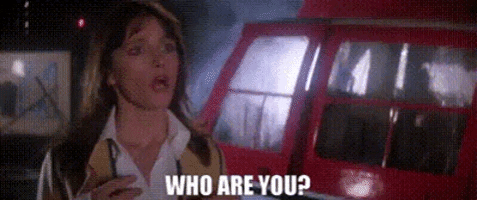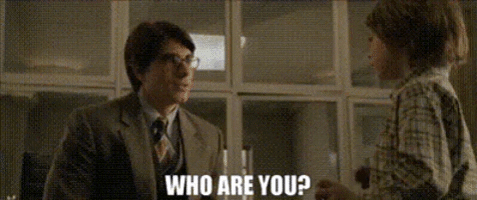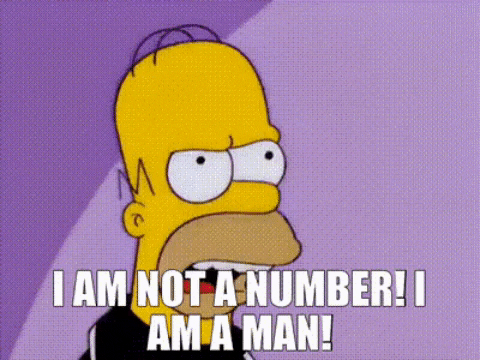“Where Superman’s cape was plain,
adorned with only his S-brand,
Marvel’s was flamboyantly decorated
with gold trim and fleur-de-lys.
He was wearing
The Military Dress Uniform
of A Regiment of
Future Men and Women.”
KRYTEN:
Sir, we really must get down to the storage bay.
Now, remember my message to us --
that is where we meet the Inquisitor
for the final confrontation.
CAT:
That's your plan? We go out there and face him?
Nice plan. Shall I paint a bullseye on my face?
LISTER:
Listen, Kryten, I've been thinkin' about this,
I've come up with somethin'.
KRYTEN:
Yes, sir?
LISTER:
I'm gonna use my brains
for the first time in my life.
KRYTEN:
Considering the circumstances, sir,
do you really believe that's wise?
LISTER:
Gimme the time gauntlet.
KRYTEN gives it to him.
KRYTEN:
But you don't know how to use it, sir!
LISTER:
You'll have to shout out instructions, won't ya?
KRYTEN:
Wouldn't it be simpler if I wore it?
LISTER:
You can't wear it, Kryten!
KRYTEN:
Why not?
LISTER:
You're programmed not to Kill.
“Billy Batson, Good and True, has been selected to take the place of the retiring wizard, who has used his powers to protect humankind for the last three thousand years and wants a break. The transfer of power is accomplished when Billy speaks the wizard’s name — “Shazam!” — triggering a thunderclap and flash of lightning. In the swirling smoke of the ultimate conjuring trick stands a tall man in a cape. He wears a red militarystyle tunic with a chunky yellow lightning bolt on the chest. His cape is white with a high collar and braided yellow trim. He has a yellow sash around his waist, red tights, and yellow boots. (He wisely steers clear of the underpants-on-the-outside look.) With his slicked-back brilliantined hair, he looks like the boy Billy grown up, perfected. He looks, in actual fact, almost exactly like the actor Fred McMurray, upon whose features Charles Clarence Beck based those of his hero. His final task complete, the wizard slumps back in his throne, and the immense block of stone drops to smash his body flat. His spirit form haunts the panel like Obi-Wan Kenobi dispensing postmortem advice to the fledgling superhero.
It’s a heady brew and it extends the potential of the superhero in the way that “Lucy in the Sky with Diamonds” pushed the prevailing idea of popular music into something unforeseen.
The magic word was a concept that connected the hero to the basis of human speech; language, storytelling. Captain Marvel’s power came not from years in the gym or from his alien biology or his royal blood. His power came from a spell. He was a magician.
I remember walking alone as a child, chanting every word in the dictionary in the hope of finding my own Shazam!
Eventually, everybody searches for his or her own magic word: the diet, the relationship, the wisdom that might liberate us from the conventional into the extraordinary. That eternal human hope for transcendence gave the Captain Marvel strip rocket fuel.
Shazam! has entered the culture as an Abracadabra or Hey Presto!—an all-purpose magical incantation. It was a word of enlightenment and personal transformation that accomplished, in a white-hot instant, what decades of Buddhist meditation could only point toward. His powers were the siddhis claimed by ultimate yogins. In the language of ceremonial magic, Shazam! summoned the holy guardian angel— the exalted future self — to come to one’s aid. When Billy’s natural curiosity got him into trouble, the word could summon Captain Marvel to deal with any and all consequences”
INQUISITOR:
(In The INQUISITOR Voice)
Enough!
The INQUISITOR opens
The Mask again to reveal
LISTER's face.
INQUISITOR:
Well! Get out of THIS one, smeghead!
LISTER:
What're you talkin' about?
INQUISITOR:
You know what you coulda made
of Your Life, if you tried.
What you coulda become.
LISTER:
So?
INQUISITOR:
You've got brains, man!
Brains you've never used!
LISTER:
So?
INQUISITOR:
So, then justify yourself!
LISTER:
Spin on it!
The INQUISITOR closes his mask again
and returns to his own voice.
INQUISITOR:
The Inquisition is over.
I have reached My Verdict.
LISTER, RIMMER, KRYTEN and CAT
are now back standing together in The Hall.
INQUISITOR:
Two of you have failed to become
that which you might so easily have been.
You have lived without merit,
and so not lived at all!
The INQUISITOR zaps RIMMER and CAT
with the green light, and they disappear.
LISTER:
You scum! You've wiped them out!
KRYTEN:
(holding LISTER back)
Sir!
LISTER:
He's crazy, Kryten!
He's erased The Cat and Rimmer!
INQUISITOR:
They are quite safe.
KRYTEN:
Sir... I'm afraid it is we
who are to be erased.
LISTER:
Ah.
The INQUISITOR does something on his gauntlet, and chains appear linking KRYTEN and LISTER
together at the ankles and the wrists.
LISTER:
The Cat has lead a more worthwhile life
than either of us?
INQUISITOR:
He is a Shallow and Selfish Creature,
as is The Hologram.
By their own low standards,
they have acquitted themselves.
Whereas you and the mechanoid
could have been so much more.
The INQUISITOR surrounds them
with the red-orange energy bubble.
LISTER:
What's this?
KRYTEN:
Best Guess: We are being surgically
removed from time.
Every memory of us, every action
we ever performed is being dissolved.
Our Lives are being undone.
INQUISITOR:
It is Complete.
The time-lines are knitted.
Causality is healed.
All that remains is to remove
your physical forms from existence.
LISTER:
Well, if you've got some amazing
secret plan up your sleeve, Kryten,
now's the time to mention it.
KRYTEN:
No plan, sir.
(Indicating his mechanoid arms)
No sleeves.
Another KRYTEN appears
behind The INQUISITOR.
He is wearing A Gauntlet
like The INQUISITOR's.
FUTURE KRYTEN:
Perfect! Ah, now, What Do I Do Next?
FUTURE KRYTEN revs up a chainsaw
and cuts off The INQUISITOR's Hand
with The Gauntlet.
While The INQUISITOR staggers around in pain,
FUTURE KRYTEN kicks The Gauntlet
to LISTER and KRYTEN.
FUTURE KRYTEN:
Now, hurry! Take The Gauntlet and Go!
LISTER:
What the smeg is goin' on?
FUTURE KRYTEN:
I don't have time to explain!
I've come from The Future to rescue you.
Now you must go! Hurry!
KRYTEN:
What about me? I mean... you...
I mean... us?
FUTURE KRYTEN:
I'm afraid we get killed.
KRYTEN:
Killed? How?
FUTURE KRYTEN:
While I'm standing here explaining this to you,
The Inquisitor jumps me
from behind, like this : --
The INQUISITOR jumps FUTURE KRYTEN from behind and starts to crush his head against the wall.
FUTURE KRYTEN:
I forgot to say, before you reach
The Final Confrontation in The Storage Bay,
you must have decoded The Gauntlet's controls.
LISTER:
How? Can you give us a clue?
FUTURE KRYTEN:
Well, I cannot explain --
For some bizarre reason
My Final Words are "Enig."
LISTER:
"Enig?!"
FUTURE KRYTEN:
Yeah, enig--
There is a crunching noise as the INQUISITOR
finally crushes FUTURE KRYTEN's head.
The remaining KRYTEN begins
to pull LISTER away down the corridor.
KRYTEN:
Come on sir, we have to go!
LISTER:
He's just killed you, Kryten!
KRYTEN:
Sir! We have got to go!



